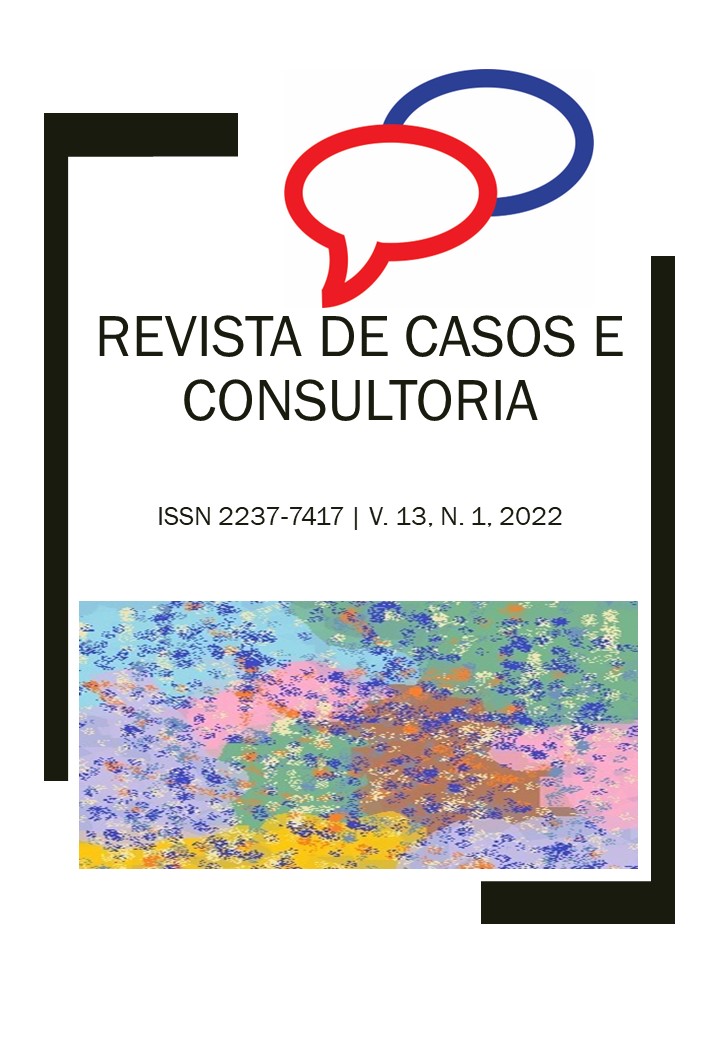Fatores associados a infecção pelo HIV em pessoas privadas de liberdade
Palavras-chave:
Infecção pelo HIV; Prisioneiro; Fatores de risco.Resumo
O estudo objetiva analisar na literatura quais os fatores de risco contribuintes para a infecções pelo HIV em pessoas privadas de liberdade. Foi realizado um estudo qualitativo do tipo Revisão Integrativa (RI). A busca foi realizada em setembro de 2021 por dois avaliadores diferentes e duplo cego nas bases de dados: LILACS, MEDLINE e IBECS. Utilizou-se a estratégia PVO, e apartir da consulta pelo DeCS e Mesh estabeleceu-se os descritores e procedeu para o cruzamentos que resultou no total de 4.386 publicações. O estudos foram classificados pelos níveis de evidências proposto por Stetler et al. (1998) e Melnyk e Fineout-Overholt (2005). Dos 9 artigos incluídos os resultados mostraram que os fatores de risco contribuintes para aquisição do HIV foi sexos desprotegido, prática sexual anal e vaginal, sexo extraconjugal, uso de álcool e drogas antes das relações sexuais, compartilhamento de materiais perfuro cortantes, estando associado nível de escolaridade do presidiário, assim como histórico de prisões anteriores e realização de tatuagens. Em síntese, evidência a necessidade dos esforços e articulações necessárias para ofertar um cuidado integral, tendo como objetivos assistenciais: a qualidade de vida dos sujeitos e a necessidade de realização de campanhas preventivas nos presídios.
Downloads
Referências
ALBUQUERQUE, Ana Cecília Cavalcanti et al. Soroprevalência e fatores associados ao Vírus da Imunodeficiência Humana (HIV) e sífilis em presidiários do Estado de Pernambuco, Brasil. Ciência & Saúde Coletiva, v.19, n.7, p. 2125-2132, 2014.
BAGGALEY, Rebecca F; WHITE, Richard G; BOILY, Marie-Claude. HIV transmission risk through anal intercourse: systematic review, meta-analysis and implications for HIV prevention. International Journal of Epidemiology, v.39, p. 1048–1063, 2010.
BARBOSA, Mayara Lima et al. Ações de enfermagem para as pessoas privadas de liberdade: uma scoping review. Esc Anna Nery, v.23, n.3, 2019.
BURATTINI, Marcelo Nascimento et al. Correlation between HIV and HCV in Brazilian prisoners: evidence for parenteral transmission inside prison. Rev Saúde Pública, v.34, n.5, p. 431-6, 2000.
BRASIL. Secretária de vigilância em Saúde / Ministério da Saúde. Boletim Epidemiológico HIV/Aids, 2021.
BRASIL. Protocolo Clínico e Diretrizes Terapêuticas (PCDT)/ Atenção Integral às Pessoas com Infecções Sexualmente Transmissíveis (IST), 2015.
COSTA, Elizama dos Santos et al. Mulheres encarceradas: Perfil, sexualidade e conhecimento sobre infecções Sexualmente Transmissíveis. Revista uningá, v.52, n. 1, p. 23-28, 2017.
DOLAN, Kate et al. People who inject drugs in prison: HIV prevalence, transmission
and prevention. International Journal of Drug Policy v. 26, s. S12–S15, 2015.
FERRETO, Lirane Elize Defante et al. Seroprevalence and associated factors of HIV and Hepatitis C in Brazilian high-security prisons: A state-wide epidemiological study. PLoS ONE, v.16, n. 7, p. 0255173.
FOX, Aaron D. et al. Health outcomes and retention in care following release from prison for patients of an urban post-incarceration transitions clinic. Journal of health care for the poor and underserved, v. 25, n. 3, p. 1139, 2014.
KHAN, Muhammad Dawood et al. Prevalence and associated risk factors of HIV in prisons in Balochistan, Pakistan: a cross-sectional study. F1000Research, v.7, p.1821, ,2021.
KNIGHTON, Joi-Sheree et al. Perceived Risk of HIV Infection among Drug-Using African American Male Prisoners: One Year after Community Re-entry. Subst Use Misuse, v.51, n.12, p.1610–1618, 2016.
MELNYK, B.M, FINEOUT-OVERHOLT, E. Making the case for evidence-based practice.In: Melnyk BM, Fineout-Overholt E. Evidence based practice in nursing & healthcare. A guide to best practice. Philadelphia: Lippincot Williams & Wilkins; 2005.p.3-24.4
MOHER, David et al. Preferred Reporting Items for Systematic Reviews and Meta-Analyses: The PRISMA Statement. PLoS Medicine, v. 6, n. 7, e. 1000097, 2009.
MENDES, Karina Dal Sasso; SILVEIRA, Renata Cristina de Campos Pereira; GALVÃO, Cristina Maria. Revisão Integrativa: Método de pesquisa para a incorporação de evidências na saúde e na enfermagem. Texto Contexto Enferm, v.17, n.4, p. 758-64, 2008.
MARTINS, Nádia Vicência do Nascimento et al. Infecções Sexualmente Transmissíveis no contexto de privação de liberdade. Research, Society and Development, v. 10, n. 1, e49410112044, 2021.
PINTO, Valdir Monteiro et al. Fatores associados às infecções sexualmente transmissíveis: inquérito populacional no município de São Paulo, Brasil. Ciência & Saúde Coletiva, v.23, n. 7, p. 2423-2432, 2018.
ROSEN, David L et al. Characteristics and Behaviors Associated With HIV Infection
Among Inmates in the North Carolina Prison System. American Journal of Public Health, v.99, n.6, p.1123-1129, 2009.
SOUSA, Karinna Alves Amorim et al. Fatores associados à prevalência do vírus da imunodeficiência humana em população privada de liberdade. Rev Esc Enferm USP, v.51, e. 03274, 2017.
THAISRI, Hansa et al. HIV infection and risk factors among Bangkok prisoners, Thailand: a prospective cohort study. BMC Infectious Diseases, v.3, n.25, 2003.
TROYA, Macri; VILA, Berthier. Infección por el Virus de Inmunodeficiencia Humana y conductas de riesgo associadas en un Centro Penitenciario de Montevideo, Uruguay. Rev Esp Sanid Penit, v.12, p.21-28, 2010.

 Português (Brasil)
Português (Brasil) English
English Español (España)
Español (España)